Jump Ahead To
Shogi has appeared in a number of works in both anime and manga. The Japanese counterpart for chess is played on a 9×9 board instead of the usual 8×8 and has simpler pentagonal pieces.
However, like chess, shogi quickly unravels to be a complex strategy game. Both games have a staggering multitude of combinations and movements. However, as chess gets simpler as the game progresses and more pieces are captured, the opposite applies to shogi! Once you capture your opponent, you can use them as your pieces until either king is captured.
For most of us, anime and manga have served as the world’s entrance gate to Japanese culture. With every series we watch, we learn more about the food they have, the traditions they observe, and the life they generally have. Some of us even learn a lot about Japanese history and their language!
If you’re like most of us here at ChasingAnime, you probably heard of shogi, but do not know how to play it. We will be giving you the basics of the game, plus the life lessons you can pick up from it, courtesy of our favorite works.
How to Play Shogi
Basically put, shogi is a tabletop strategy game, much like chess. Unlike chess and its 8×8 board, shogi uses a 9×9 board. Usually, both places start with 20 pieces each. The pieces are narrow and pentagonal, with the pointy end facing the opponent. The 20 starting pieces are as follows. A kanji is engraved unto every piece, with some pieces having a character underneath for their promoted versions.
| English equivalent | Japanese literal name | Promotion | No. of Pieces |
| King | osho (king general, for Player 1)/ gyokusho (jeweled general for Player 2) | N/A | 1 ea |
| Rook | hisha (flying chariot) | ryuo (dragon king) | 1 ea |
| Bishop | kakugyo (angle mover) | ryuma (dragon horse) | 1 ea |
| Gold General | kinsho (gold general) | 2 ea | |
| Silver General | ginsho (silver general) | narigin (promoted silver) | 2 ea |
| Knight | keima (cassia horse) | narikei (promoted cassia) | 2 ea |
| Lance | kyosha (incense chariot) | narikyo (promoted incense) | 2 ea |
| Pawn | fuhyo (foot soldier) | tokin (reaches gold) | 9 ea |
As in chess, the varying pieces can move around the board, though in different directions and distances. Pieces that can be promoted when they reach rows 7, 8, or 9, depending on the piece. Layout-wise, here is a helpful infographic from the Eurasia-Chess website. It takes the western Chess most people are familiar with, and compares it with its Chinese and Japanese counterparts, Xiang Qi and Shogi, respectively.
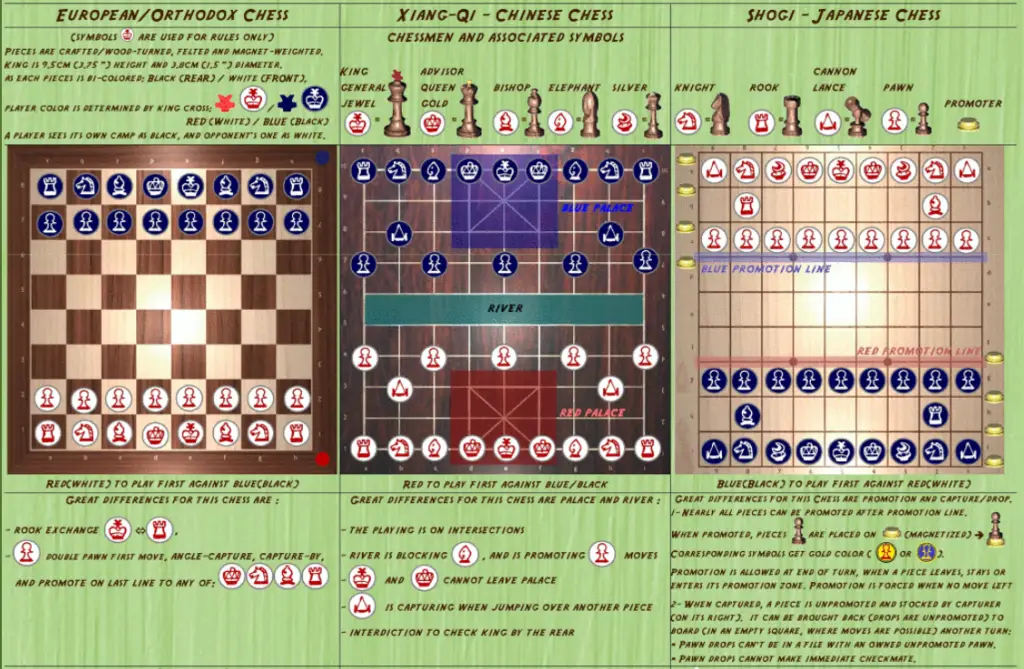
Another interesting feature in shogi is that captured pieces are not completely out of the game. They remain in the hand of the capturing player. These pieces can be used back in the game under their control. Pieces that are captured and brought back in the game return to their unpromoted forms. To summarize, here are the basics of the game from the same source:

Those are the basics of the game and if you want to know more, you can read the manual we use here at ChasingAnime. This is the chess set we use in our office – It is light, magnetic and portable. At home, I use this beginner friendly shogi set. Each piece has a simple arrow (directions) engrave on it. That way, I’d never forget the abilities of each individual piece.
Top 5 Shogi Anime and Manga
We at ChasingAnime understand that ranking what is the best shogi anime and manga is a bit more complex, weighing the technicalities of the game as well as its relevance to the story. Then you start considering other factors that make a good anime or manga.
Their individual rankings are included below, courtesy of MyAnimeList.net. While thousands of fans have voted, the following works are those you definitely can’t miss. With that, here are our top shogi anime and manga recommendations as well as other prominent anime featuring the historic tabletop game.
1. The Ryuo’s Work is Never Done! (Ryūō no Oshigoto!)
MAL Score (Anime): 7.00
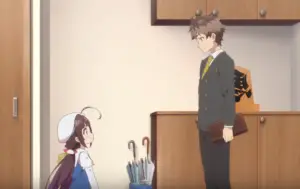
From light novel to manga and finally an anime, Ryuo no Oshigoto is a fun series with a rather crazy premise. At 16 years old, Yaichi Kuzuryuu has already lost sight of his goals after winning the prestigious Ryuo (Ryu-Oh) title. Everything changed when 9-year-old prodigy Hinatsuru Ai seeks to train under him.
Together, they begin their journey in the local shogi scene, but here’s the catch: if Ai does not become a major shogi player before graduating middle school, Kuzuryuu has to marry her.

It’s a fun loli series to watch but impressively serious in its shogi. From the terminologies and the techniques, it offers a different level of fun people familiar with the game will appreciate. In Japan, the champions of major shogi tournaments also earn titles depending on which competition they won. Yaichi Kuzuryuu is referred to as Ryūō and he will fight against Meijin who is apparently based on a real person.
Also, the story reveals small facts about the Japanese shogi world, with professional players earning significant salaries depending on their play. Players in the lower pro rank can earn close to 2 million yen annually. Moreover, Ryuo (see Ryuo no Oshigoto above) champions can earn some 42 million yen or a little over 386,000 US dollars.
2. March Comes in Like a Lion (3-Gatsu no Lion/ Sangatsu no Raion)
MAL Score (Anime): 8.45

Fans of Honey and Clover, and its mangaka Chica Umino, might have come across her other work, 3-gatsu no Lion. It follows Rei, a 17-year-old player with the rank of five dan who lives by himself. He is orphaned and estranged from his foster family, he has his shogi career ahead of him but he generally appears to be a loner. (See more of our loner protagonists, shut-ins and recluses in our best isekai anime list.)
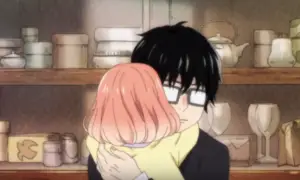
The only people he usually interacts with is a family of three sisters who take care of him. The story closely follows Rei as he grows and learns to interact with others, especially the sisters. It doesn’t have lavish special effects as in your standard shonen anime, but it does use some variations in its presentation which makes it visually appealing. Also, watching the shogi exchanges makes it look like you’re watching a professional game, top view, all characters marked and available for you to follow.
3. 81 Diver (Hachi Wan Daibaa)
MAL Score (Manga): 6.89
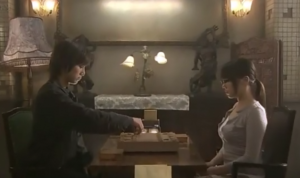
While it has an interesting premise, Hachi Wan Daibaa has yet to find an anime adaptation. The source material is a manga by Yokusaru Shibata and what follows it are video game adaptations across multiple platforms – from PS2 to Nintendo DS and Wii. However, it was later adapted into a TV drama, running for 11 episodes.
The series protagonist, Kentaro, comes up short at playing shogi professionally, resorting to gambling through amateur shogi clubs. His defeat at the hands of the mysterious “Ukeshi” leaves him dumbfounded and pushes him to take the game more seriously.

The twist in 81 Diver is that the mysterious Ukeshi is also offering a part-time house cleaning service, in maid cosplay uniform. It is a must-watch as it shows how Kentaro tries to put his life in order under the (unintentional) guidance of the Ukeshi.
4. Shion’s King (Shion no Ō)
MAL Score (Anime): 7.58
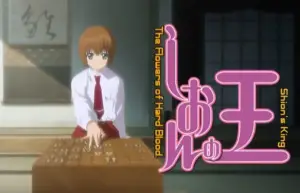
This one fuses mystery and suspense to the journey of a professional shogi player. Shion’s King is an anime about a girl who plays shogi in an attempt to uncover the truth. After Shion Yasuoka’s parents were murdered brutally, the trauma left her unable to speak. She communicates with others through a notebook.
It follows her journey as a professional shogi player as the case behind her parents’ murder unravels. Shion even battles it out with his foster father, also a professional player in the same league as her. It’s not antagonistic, it’s like a test where the student surpasses the master.
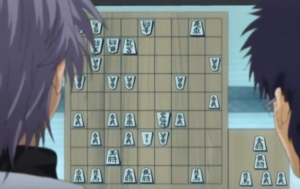
For fans of Hikaru no Go, it’s safe to say that Shion no O is its shogi counterpart, having similar premises. The fights are not overly dramatic, but it always has some surprises punches here and there.
5. Even so, Ayumu Draws Closer to the End Game (Soredemo Ayumu wa Yosetekuru)
MAL Score (Manga): 7.57

Here is another manga (hoping for an anime) that has shogi as an integral part of its storytelling. It follows Ayumu Tanaka, a junior who joins the shogi club with his senpai, Urushi Yaotome. His only goal: to beat his senpai at shogi so he can finally confess his feelings.
The romance and comedy of Soredemo are reminiscent of Hanamichi Sakuragi and Haruko Akagi’s love story, for Slam Dunk fans. However, it takes it to the next level as it is basically the center of the story. What makes it more interesting is that from the first chapter of the manga, Urushi has a hint of what her kouhai feels. Ayumu nonchalantly flirts and calls Urushi cute, but without directly admitting his feelings.
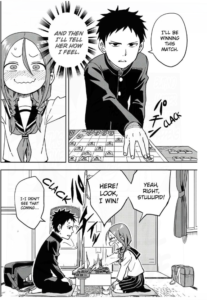
With Soredemo, the more you follow their story, the more you see how they try to push the other into a checkmate, both in shogi and in their feelings. This playful flirting plus the natural incorporation of the game in their conversation makes Ayumu and Urushi’s story a worthwhile read.
Other notable examples in manga and in anime
A lot of other anime and manga, while not centered around playing shogi, has featured the tabletop game. These different works, which offer a slice of Japanese culture for everyone, just show the role shogi plays in society. Here are some other notable shogi features in manga and in anime.
Naruto
Shogi featured prominently in the hit series Naruto. Sarutobi Asuma uses the game to connect with his father, the Third Hokage Sarutobi Hiruzen, as well as with his student, Nara Shikamaru.

In Part I, during the Chuunin Exams Arc, the series’ resident “brilliant but lazy stereotype” uses shogi to train himself. During his stay at the academy, he was simply too lazy to take tests seriously, leading people to group him with the school’s rascals including Naruto and Inuzuka Kiba.
To gauge his intelligence without boring him, Asuma Sarutobi posed multiple shogi situations that Shikamaru easily solved, leading him to realize that the unmotivated student was actually a genius with IQ over 200.
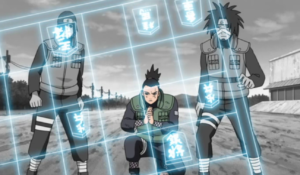
In Part II (Shippuden), the teacher-mentor still plays shogi, but in a deeper and more ominous manner. Asuma described himself as a pawn, a replaceable warrior whose role is to pave the way for the other pieces to move forward (chilling foreshadowing right here). He then explained that Shikamaru is a knight, whose unique movement translates to a large range of possibilities.
Detective Conan

The recently introduced Shukichi Haneda is the source of most shogi-related content in the still-ongoing Detective Conan (seriously, more than THAT One Piece). He is a professional shogi player with impressive memorization and deductive abilities.
An interesting case having ample references to the tabletop game is “Taiko Meijin’s Match of Love,” episode 785 and 786 in the anime. Shukichi’s lover, Yumi, was abducted by an antagonist known as the “Headless Shogi Player,” who left a deciphered shogi-filled message.
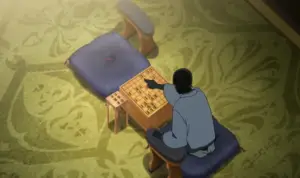
The first riddle says: “One of the seven shrines is attacked by thieves. The sanctuary is emptied on the second day. The priest’s daughter hiding in the well is kidnapped as well.” The clues and the answers present a history behind shogi, as well as some facts about its modern-day society. For example, the seven shrines referred to in the riddle are the seven titles (which became eight with the addition of Eiou in 2017): Meijin, Ryuoh, Kisei, Oui, Ouza, Kiou, and Oushou.
Key Takeaways from Shogi
Shogi was initially made to simulate war, with the players strategizing in order to gain an advantage. Also, the time it takes and the patience needed to finish a game of shogi gives players the time to reflect, not only on their next move but on the relevance of it all.
As the above anime and manga have shown us, shogi teaches us lessons we can also use in life. Here are some of the important lessons we picked up watching these shogi anime and reading these manga.
1. Protect the King
Shogi and its cousins literally refer to “The King” (fun fact, checkmate comes from the Persian phrase “shāh māt,” generally translated to “the king is dead.”). Some works have taken it literally, using the king’s extreme importance to refer to something else.
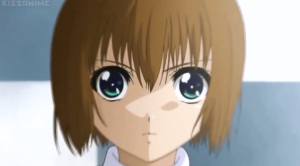
Masashi Kishimoto’s magnum opus does this very well. In Naruto Shippuden, during the Akatsuki Suppression Mission Arc, Shikamaru and his mentor Asuma plays shogi as they have done to pass the time ever since Shikamaru was young. The young Nara chuunin notes his sensei’s reckless strategies. After knowing what pieces represent them, Asuma then said that the most important is to always protect the king. When Shikamaru said that the village leader, the Hokage, is King. His teacher told him that it wasn’t.
Later on, Shikamaru would come to understand that the King is Asuma’s unborn child, and by extension, the future generations of Konoha. This is the most important asset that they have to defend as ninjas of the Hidden Leaf.
2. The Ryuo’s Work is Never Done
Yes, we know it’s the title of a shogi anime, you can read it below. It simply means that standing at the top is often not the end of a journey. As with the anime of the same name, Yaichi learns that there’s still a lot for him to do, in his case, train a young shogi protege.
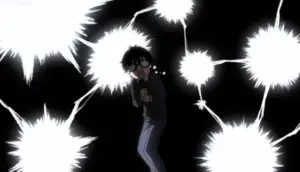
It is often depicted that geniuses and talented individuals lose sight of what to do next after reaching what they perceive to be the top. The same dilemma is presented in Food Wars (Shokugeki no Soma), when Shinomiya Kojirou experienced a slump shortly after opening a successful restaurant.
While there are cases where there will always be a bigger fish to catch, sometimes the next chapter in our journey is found by looking in another direction. Yaichi found his next step not in competing, but in mentoring.
3. Learn to Rely on Others
The third and most important lesson we found comes from 3-gatsu no Lion, specifically Rei’s teacher Takashi Hayashida. Also a shogi geek, he tells the distant Rei that “If things seem hopeless when you’re alone, then rely on someone. Otherwise, to be honest, no one will rely on you.”

This is evident in shogi which simulates war by using different pieces. Castle strategies are only sufficient to protect the king if you have the right pieces to protect it at all sides. The same applies for creating successful openings that can be carried out into a later offensive.
In life, it is important for us to understand that different people have different capabilities and together, we can make up for our weaknesses with our friends and family. Remember, people collapse not because they’re weak, but because they’ve been strong for too long. Rei learns to open up and get closer to the sisters as the series progress, leading him to mature even more.
4. Never Give Up
This is a common theme in both Shion no Ou as well as in 81 Diver. In Shion no Ou, Shion continues playing under the tutelage of her foster father Shinji. He used to be a family friend and neighbor before the accident. Shinji also plays shogi as a professional. Shion continues because (1) she loves the game and (2) she knows it will lead her to learn the truth about the death of her parents. Although the trauma of that shogi-related incident caused her to lose her voice, she still continued playing to know the truth.

On the other hand, Kentaro initially looked discouraged at trying his hand again at being a professional shogi player. He settled being a shinkenshi or a gambler to make ends meet. Upon facing an unexpected loss at the hands of Akiba’s Ukeshi, he initially was unable to accept defeat, saying that shogi was his backbone. He continued to play until he learned more from the woman who defeated her.
This also drives both of the main characters in Soredemo Ayumu no Yosetekuru. While Urushi seems actually formidable, Ayumu still plays and learns more with each game in order to get to his goal. On the other hand, Urushi tries, in both shogi and in their conversations, to get the truth from Ayumu without giving herself off too much.
Conclusion
If you are one that loves mind games and to always be one (or several) step ahead of your opponent, you will surely love the above. Our recommendation to start with if you are new to the Shogi genre is Even so, Ayumu Draws Closer to the End Game. It is light hearted and keeps you engaged in their daily banter, always wanting to find out how our main character is gonna capture her crush one step at a time, inch by inch, drawing closer to the end game.
P.S. After watching and reading tonnes of Shogi series, there is one thing that I can be certain of: No one watching Shogi anime actually understands the game. 🙂 Peace out.





![What does Tanjiro’s black sword mean? [All Nichirin Sword Colors Explained]](https://chasinganime.com/wp-content/uploads/2020/01/Nichirin_Sword-100x70.png)
